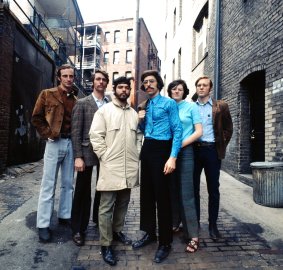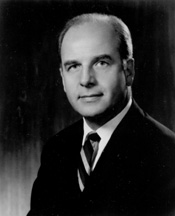Earth Day - The History of the World’s Largest Secular Observance
April 2, 2019

In 1970, activism was on the mind of Americans.
Anti-war movements had rocked the country, and the United States was still forming a new consciousness in the wake of the Civil Rights Movement. There must have been a palpable sense that, as Eleanor Roosevelt put it, "a small group of thoughtful, committed citizens can change the world; indeed, it’s the only thing that ever has."
Despite this energy, environmental concerns were not on the top of America's to-do-list.
There was an emerging awareness however, thanks to Rachel Carson's best-selling 1962 book, Silent Spring.
Silent Spring was a transformational moment in the American public's environmental sensibilities and emphasized the connection between pollution and public health. For many Americans, reading Silent Spring was the first cause to think critically about the environment.
The first Earth Day in 1970 catalyzed this nascent consciousness into real action.
 Wisconsin Democratic U.S Senator, Gaylord Nelson, was the genesis of the first Earth Day. He was inspired to found a nation-wide day dedicated to the environment after witnessing a catastrophic oil spill in Santa Barbara, California.
Wisconsin Democratic U.S Senator, Gaylord Nelson, was the genesis of the first Earth Day. He was inspired to found a nation-wide day dedicated to the environment after witnessing a catastrophic oil spill in Santa Barbara, California.
Realizing that if the anti-war fervor could be directed towards the environment, national policy could be implemented, Nelson built a team to found what would become the first Earth Day. Harvard graduate student Denis Hayes was recruited as National Coordinator. Hayes recruited Andrew Garling to coordinate the Northeast and Stephen Cotton to run the media campaign. Bryce Hamilton joined to coordinate high school students, Barbara Reid joined to coordinate the Midwest, and Arturo Sandoval was recruited to coordinate the Western initiative. April 22nd was chosen as the date.
On April 22nd, 1970, 20 million Americans demonstrated in public areas for a healthy, protected, and livable environment. This first Earth Day represented a political synthesis. Environmental groups with a variety of agendas realized they had a common goal, and politicians across the aisle worked together to create the Clean Air, Clean Water, and Endangered Species Acts within the year.
As the 1990's dawned. The public reached out to Dennis Hayes to reorganize the famous Earth Day. Earth Day 1990 catalyzed 200 million people in 141 countries to demonstrate for environmental issues on a global level. In 1995, President Clinton awarded Senator Nelson the Presidential Medal of Freedom for his role as Earth Day founder.
Earth Day is now the largest secular observance in the world and a day of direct action on behalf of the environment.
If you are interested in celebrating Earth day check out the Museum of World Treasures' next Culture with Cocktails event on April 4th.
